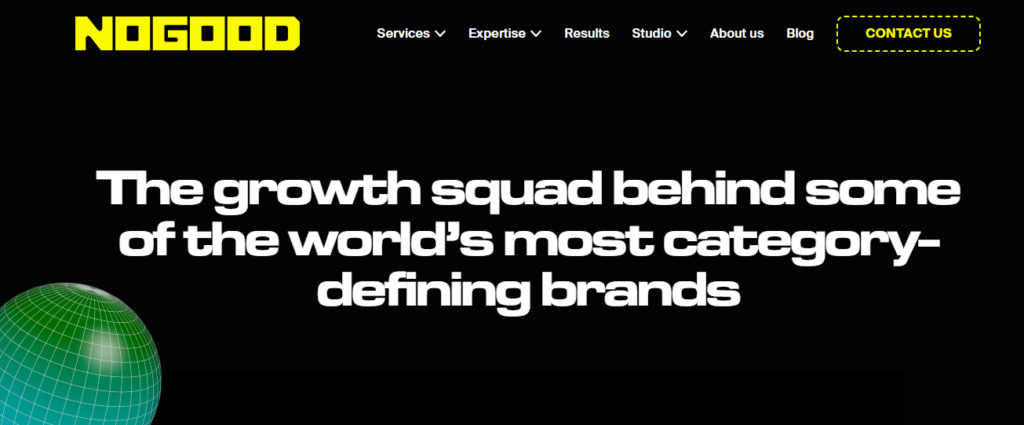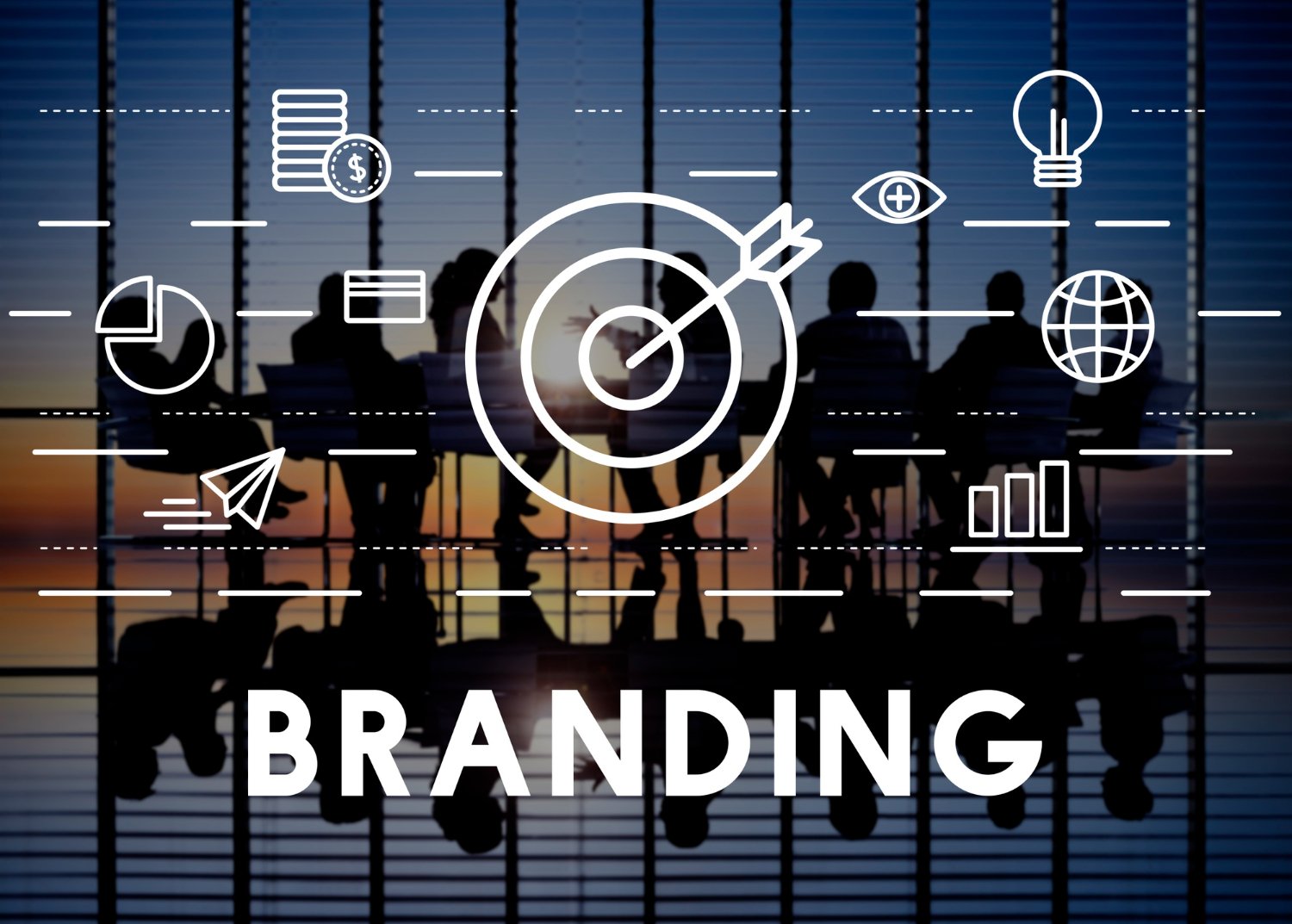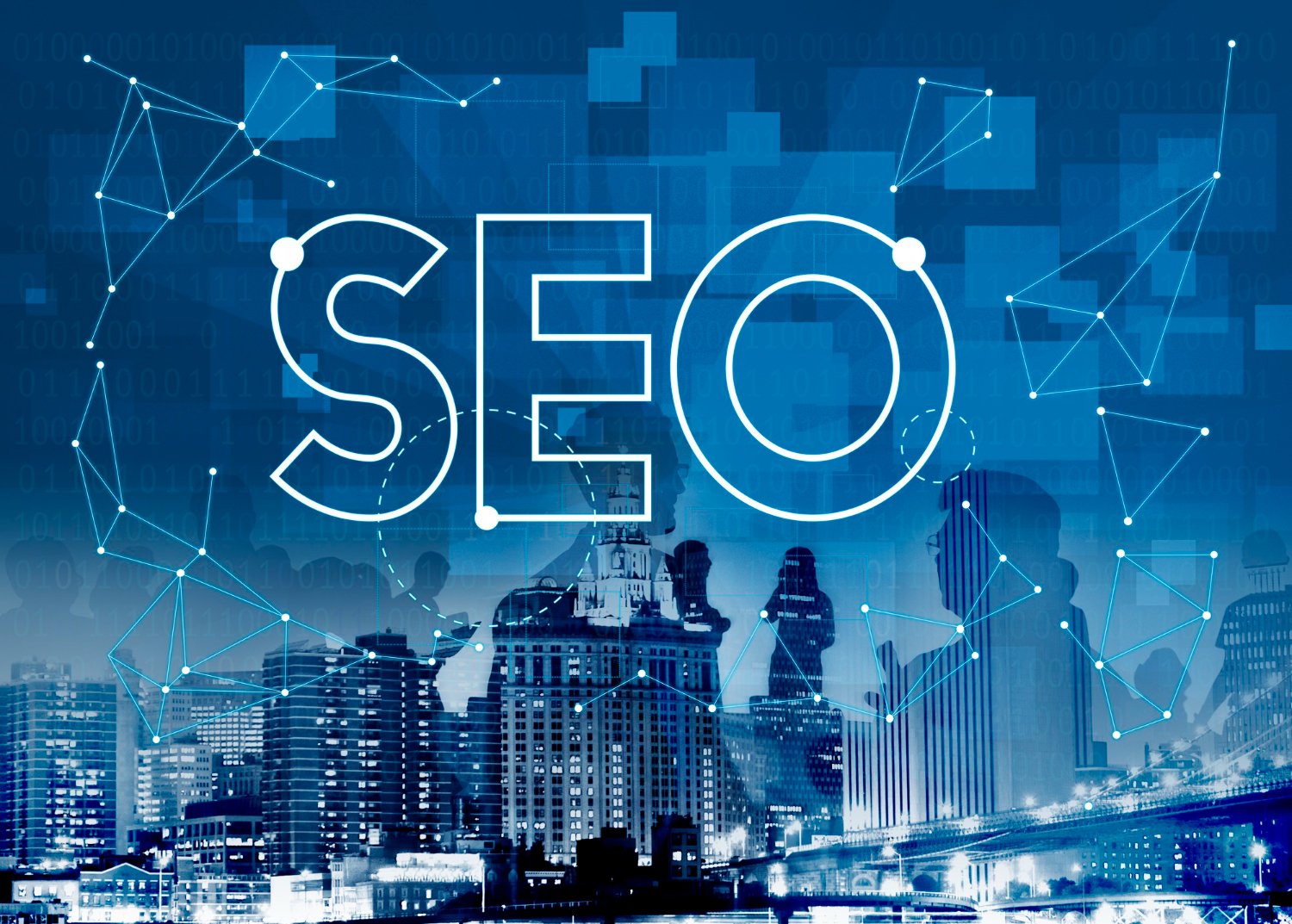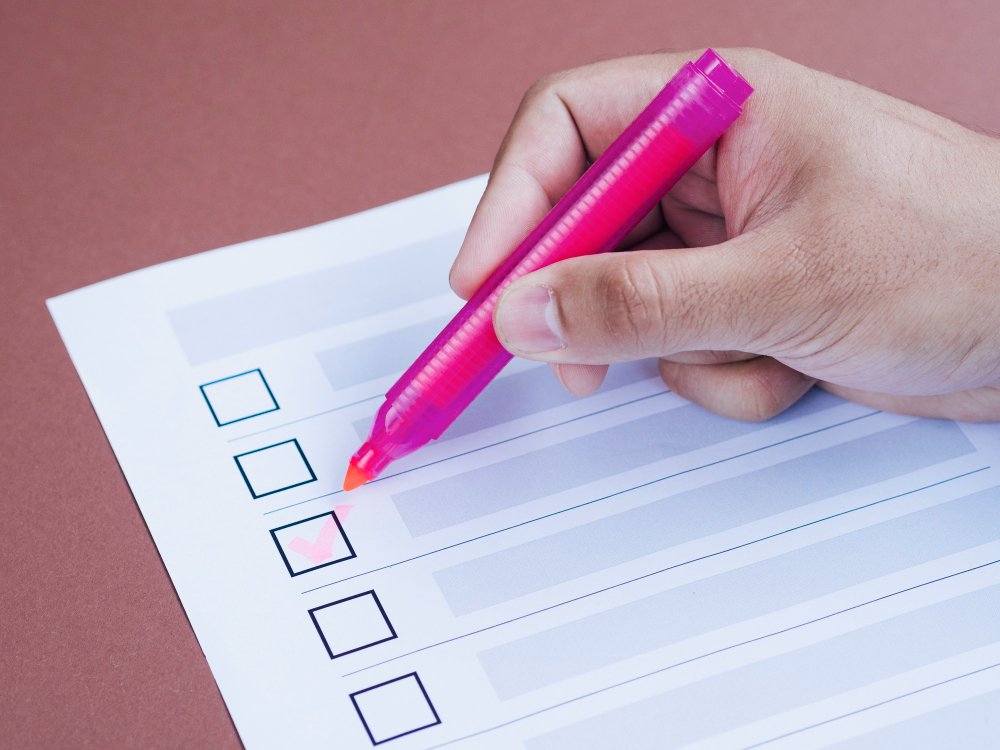Branding in 2025 is shifting faster than ever. Businesses are no longer relying on traditional marketing strategies. Instead, they’re turning to next-gen branding experts who understand how to build strong, future-proof identities.
From AI-driven storytelling to hyper-personalization, branding is becoming more strategic, engaging, and human-centered. The focus is on branding trends 2025 that go beyond aesthetics, blending technology with authenticity to create deeper connections with audiences.
This blog highlights the top branding agencies and industry leaders redefining how businesses establish their identity. Experts like Sahil Gandhi, known as The Brand Professor, and Bhavik Sarkhedi, a leading Personal Branding Strategist, are at the forefront of this transformation.
Expect insights on what’s driving modern branding, who’s leading the charge, and how businesses can stay ahead in an industry that demands innovation and adaptability.
Leading Branding Experts of 2025

Innovators Redefining Brand Strategies
Businesses in 2025 are working with next-gen branding experts who understand how to create strong identities that leave a lasting impression. These professionals use branding trends 2025 to help companies connect with their audiences through unique strategies and storytelling.
Detailed Table: Leading Branding Experts of 2025
| Expert Name | Title & Role | Key Expertise | Notable Contributions | Companies/Brands Associated With |
| Sahil Gandhi | Expert Brand Consultant & Founder of Blushush | Brand strategy, market positioning, brand storytelling, branding personalization | Helps businesses create strong, market-relevant identities with data-driven branding strategies. Focuses on digital-first brand storytelling and AI-driven brand growth. | Blushush |
| Bhavik Sarkhedi | Personal Branding Strategist & Founder of OhhMyBrand, Estoryteller, Dad of Ad | Personal branding, thought leadership, influencer marketing 2025, brand storytelling | Helps entrepreneurs, startups, and professionals build influential digital identities. Guides personal brands in social media positioning and authority-building. | OhhMyBrand, Estoryteller, Dad of Ad |
| Lulu Cheng Meservey | Radical PR & Communications Expert | Strategic messaging, public relations, digital branding strategies | Redefines corporate PR with bold, direct, and transparent communication. Advises businesses on modern audience engagement and crisis management. | Worked with high-profile corporate brands |
| Amy Call Well | Global Branding Leader & EY’s Chief Communications Officer | Corporate branding, brand storytelling, audience engagement | Modernizes corporate brand strategies to align with digital-first branding approaches. Leads EY’s global branding transformation efforts. | EY (Ernst & Young) |
| Lara Shriftman | Luxury Branding Strategist & PR Specialist | Luxury branding, influencer marketing 2025, immersive brand experiences | Specializes in high-end brand storytelling and exclusive brand positioning. Works with luxury brands to enhance audience engagement and loyalty. | Luxury fashion, beauty, and lifestyle brands |
1. Sahil Gandhi – The Brand Professor

Sahil Gandhi, founder of Blushush, is a leading brand strategy consultant known for helping businesses create strong, recognizable identities. His expertise in brand storytelling and branding personalization ensures that companies communicate their values effectively while building deeper connections with their audience.
By analyzing market trends and consumer behavior, he develops strategies that keep brands adaptable to shifting industry demands. His understanding of branding trends 2025 allows businesses to integrate AI-driven branding strategies and immersive brand experiences into their marketing efforts.
Under his leadership, Blushush has gained recognition for refining visual identity, messaging, and digital presence. His approach focuses on crafting branding strategies that not only differentiate businesses but also ensure long-term relevance in competitive industries.
2. Bhavik Sarkhedi – Personal Branding Strategist

Bhavik Sarkhedi, founder of OhhMyBrand, Estoryteller, and Dad of Ad, is a well-known personal branding strategist with a track record of helping professionals, entrepreneurs, and executives establish influential digital identities. As the author of 12+ books, he has mastered the art of brand storytelling, ensuring individuals present themselves with clarity, authority, and authenticity.
His expertise in branding personalization enables clients to communicate their unique value effectively. By leveraging branding trends 2025, he develops strategies that enhance visibility across LinkedIn, personal websites, and media publications. His content-driven branding approach helps individuals connect with their audience, positioning them as thought leaders in their industry.
Through tailored messaging and audience engagement, he refines personal brands to reflect credibility and influence. His strategic insights allow professionals to stand out in competitive spaces, ensuring their brand remains strong, recognizable, and relevant.
3. Lulu Cheng Meservey – Radical PR Expert

Lulu Cheng Meservey is redefining public relations with a bold, no-nonsense approach to brand communication. Known for her expertise in strategic messaging and direct brand positioning, she challenges outdated PR norms and helps businesses build credibility through transparent and impactful storytelling.
Her work emphasizes branding personalization, ensuring that companies engage with their audiences authentically. By understanding branding trends 2025, she crafts communication strategies that resonate in an era where consumers demand honesty and clarity.
4. Amy Call Well – Global Branding Leader
Amy Call Well plays a key role in shaping corporate branding at a global level. As EY’s Global Chief Communications Officer, she leads branding initiatives that modernize and strengthen the firm’s market presence. Her expertise in brand positioning and strategic communication ensures that organizations maintain a strong and recognizable identity.
Her approach to branding trends 2025 focuses on adapting traditional corporate branding to fit the digital-first era. By integrating brand storytelling and audience engagement strategies, she ensures that large-scale brands connect with their clients in meaningful ways.
5. Lulu Cheng Meservey – Radical PR Expert
Lulu Cheng Meservey is one of the next-gen branding experts redefining brand storytelling with a bold, transparent approach. She challenges outdated PR strategies, ensuring brands embrace branding personalization and audience-driven messaging.
Her expertise in branding trends 2025 focuses on shifting corporate communication from scripted press releases to real-time, engaging content. By integrating digital branding strategies and AI in branding, she helps businesses enhance their narratives with data-driven insights.
She collaborates with branding industry leaders and top branding agencies to refine corporate messaging, ensuring brands build trust through authenticity and strategic communication.
6. Lara Shriftman – Luxury Branding Strategist
Lara Shriftman is one of the next-gen branding experts known for shaping high-end brand identities. As a luxury branding strategist, she specializes in branding personalization and brand storytelling, helping premium brands craft exclusive and experience-driven narratives.
Her expertise in branding trends 2025 focuses on immersive marketing, influencer collaborations, and strategic positioning. By leveraging digital branding strategies, she ensures luxury brands maintain desirability while adapting to modern consumer expectations.
Top Branding Agencies Shaping the Future

Detailed Table: Top Branding Agencies of 2025
| Agency Name | Location | Key Expertise | Notable Contributions | Industries Served |
| Blushush | London, UK | Digital branding strategies, AI in branding, brand storytelling | Provides cutting-edge digital branding solutions, enhancing online presence through creative strategy, web development, and branding campaigns. | Tech, eCommerce, startups, B2B brands |
| OhhMyBrand | India | Personal branding, influencer marketing 2025, SEO-driven branding | Specializes in helping entrepreneurs, CEOs, and professionals build strong digital identities, positioning them as industry leaders. | Personal branding, business coaching, executives, influencers |
| NoGood | New York, USA | Performance-driven branding, AI in branding, brand innovation | Uses AI-driven insights to optimize branding and marketing strategies. Renowned for its data-backed branding methodologies. | Tech, SaaS, startups, finance, healthcare |
| Pentagram | Global | Design-first branding, visual identity, sustainable branding | The world’s largest independent design consultancy, redefining branding through visual storytelling and sustainable design practices. | Corporate, luxury, arts, hospitality, retail |
| Wolff Olins | Global | Brand innovation, immersive brand experiences, sustainable branding | Pioneers in transformative branding solutions, helping companies adapt to changing consumer behaviors with bold and immersive brand experiences. | Multinational corporations, consumer brands, startups |
Agencies Setting New Benchmarks
The most influential top branding agencies in 2025 are redefining how businesses establish their presence. These agencies specialize in brand innovation, leveraging digital branding strategies, AI in branding, and branding personalization to create impactful brand identities. Their ability to integrate sustainable branding and immersive brand experiences sets them apart in a competitive market.

Blushush – A London-based digital agency that specializes in enhancing brand visibility through strategic brand storytelling and cutting-edge design. Their services extend across branding, web development, and digital branding strategies, making them a key player among branding industry leaders. Their ability to merge technology with creativity ensures businesses build a recognizable and influential brand.

OhhMyBrand – A highly regarded personal branding agency dedicated to CEOs, entrepreneurs, and high-profile professionals. Their expertise in branding personalization helps individuals craft strong personal identities, ensuring they stand out in an increasingly competitive digital world. They integrate influencer marketing 2025 and SEO-driven strategies to enhance online presence and authority.

NoGood – A performance-driven branding and marketing agency based in New York, specializing in data-backed AI in branding solutions. They help brands craft compelling identities using predictive analytics and audience behavior insights. Their work influences many branding industry leaders, making them a sought-after firm for businesses looking to scale their brand presence.
Pentagram – The world’s largest independent design consultancy, delivering impactful brand innovation by combining strategy, design, and storytelling. Their expertise in branding personalization helps brands create unique identities that connect with audiences.
Wolff Olins – A global branding powerhouse known for integrating sustainable branding with immersive brand experiences. Their work with multinational brands ensures that businesses remain culturally relevant while adopting forward-thinking branding techniques.
Emerging Branding Trends in 2025

Trends Transforming the Branding Industry
The next-gen branding experts of 2025 are adapting to new consumer behaviors, technological advancements, and shifting market dynamics. Businesses are focusing on brand innovation, ensuring their identities remain relevant and impactful. The following branding trends 2025 are shaping the future of marketing and brand communication.
1. AI-Driven Personalization
Brands are using AI in branding to create hyper-personalized customer experiences. AI-powered content, predictive analytics, and machine learning-driven branding strategies allow businesses to tailor messages based on user behavior. This ensures deeper engagement and higher brand loyalty.
Example: Netflix utilizes AI algorithms to analyze viewing habits, providing tailored content recommendations that enhance user engagement.
2. Immersive Brand Experiences
Virtual reality (VR), augmented reality (AR), and interactive storytelling are driving immersive brand experiences. Companies are using digital environments to bring products and services to life, enhancing customer interaction and emotional connections with brands.
Example: IKEA’s AR app allows customers to visualize furniture in their homes before purchasing, enhancing the shopping experience.
3. Sustainable Branding & Ethical Identity
Consumers are prioritizing eco-conscious brands, making sustainable branding a core focus. Businesses are integrating sustainability into their brand narratives, from packaging choices to transparent supply chain communication. Brands that align with ethical values are gaining long-term trust and customer loyalty.
Example: Patagonia emphasizes environmental responsibility in its products and operations, resonating with eco-conscious consumers.
4. The Rise of Influencer Marketing 2025
Collaboration with influencers remains one of the most powerful strategies. However, brands are shifting toward micro and nano-influencers, valuing authenticity over massive followings. This trend supports branding personalization, ensuring marketing efforts feel organic and community-driven.
Example: Daniel Wellington’s partnership with micro-influencers has significantly boosted its brand visibility and sales.
5. AI-Enhanced Branding Strategies
AI-powered design tools, automated branding assistants, and smart algorithms are helping businesses refine their branding efforts. This evolution in digital branding strategies enables companies to maintain consistency while adapting their messaging in real time.
Example: Coca-Cola uses AI to analyze consumer data, informing targeted marketing campaigns and product development.
6. Sonic Branding & Audio Identity
Brands are investing in unique soundscapes to reinforce brand recognition. Custom jingles, audio logos, and voice branding are becoming essential in marketing, especially as voice search and smart speaker usage increase.
Example: Intel’s signature five-note jingle is instantly recognizable, reinforcing its brand identity.
7. Data-Driven Brand Storytelling
Brands are leveraging data analytics to craft narratives that resonate with their audiences. Using consumer insights, businesses can create targeted campaigns that align with customer expectations, reinforcing emotional connections. Brand storytelling is evolving from generic messaging to tailored experiences backed by real-time data.
Example: Spotify’s “Wrapped” campaign utilizes user data to create personalized stories, enhancing user engagement.
Case Studies of Branding Innovation

Success Stories in Modern Branding
Branding success in 2025 goes beyond visual identity. Businesses are focusing on branding personalization, immersive brand experiences, and digital branding strategies to build deeper consumer connections. The following case studies highlight how leading brands are setting new benchmarks in branding trends 2025.
1. Nike x Skims Collaboration – Merging Fashion with Performance Branding
Nike’s partnership with Skims redefines how brands collaborate to expand their audience. This partnership brings together brand storytelling from two industry leaders, blending Nike’s athletic credibility with Skims’ expertise in shapewear. The collaboration enhances branding personalization by offering activewear tailored for different body types, making inclusivity a key branding strategy.
2. Coca-Cola’s Hyper-Localized Strategies – Adapting to Cultural Markets
Coca-Cola continues to excel in branding trends 2025 by customizing branding strategies for local audiences. Instead of using a one-size-fits-all marketing approach, Coca-Cola adapts brand storytelling based on regional cultures. This branding personalization approach is visible in packaging, flavor variations, and locally inspired campaigns, strengthening customer engagement worldwide.
3. Fenty Beauty – Inclusive Branding as a Market Disruptor
Fenty Beauty changed the beauty industry by setting a new standard for inclusivity. Its branding success lies in sustainable branding, influencer marketing 2025, and authentic representation of diverse skin tones. By prioritizing branding personalization, Fenty Beauty ensures every customer feels represented, proving that inclusive branding is a major driver of brand loyalty.
4. Spotify Wrapped – Data-Driven Brand Storytelling
Spotify’s annual “Wrapped” campaign showcases how data-driven brand storytelling can create viral engagement. By using AI in branding, Spotify curates a personalized year-in-review for users, making them feel connected to the platform. This campaign strengthens brand-consumer relationships and demonstrates the power of branding personalization in digital branding.
5. Tesla’s Minimalist Branding – Letting the Product Speak
Unlike traditional automakers, Tesla relies on brand innovation through minimalist branding. It avoids heavy advertising, allowing its brand to grow through word-of-mouth, bold product launches, and direct engagement with its audience. This approach aligns with branding industry leaders who focus on product-driven brand strength rather than conventional marketing.
The Future of Branding: Predictions for the Coming Years

Anticipated Developments in Branding
As next-gen branding experts continue to innovate, the future of branding will be shaped by technological advancements, evolving consumer expectations, and strategic brand engagement. Businesses that embrace branding trends 2025 will set the stage for long-term success.
1. AI and AR Integration in Branding
Artificial intelligence and augmented reality will play a larger role in digital branding strategies. AI-driven content creation, predictive marketing, and personalized customer journeys will become standard. AR will enhance immersive brand experiences, allowing consumers to engage with products in virtual environments before making a purchase.
Example: FFFACE.ME, a digital creative studio, collaborated with fashion brand FINCH to create a semi-digital clothing collection. By scanning QR codes on the garments, customers could activate AR features, blending physical fashion with digital experiences.
2. The Expansion of Sustainable and Ethical Branding
Sustainable branding will move beyond being a trend to becoming a necessity. Consumers will demand greater transparency in sourcing, production, and corporate ethics. Brands that integrate sustainability into their brand storytelling will build stronger trust and loyalty.
Example: Ethique, founded by Brianne West, produces solid beauty bars that eliminate the need for plastic packaging. Their commitment to sustainability has prevented millions of plastic bottles from entering landfills.
3. Community-Driven Brand Engagement
Brands will focus on building loyal communities rather than just pushing products. Branding personalization will extend to community-building efforts, where customers feel like active participants in a brand’s journey rather than passive buyers.
Example: Community Clothing, established by Patrick Grant, aims to revive the British textile industry by producing affordable, high-quality clothing. Their model supports local manufacturing and encourages consumers to invest in sustainable fashion choices.
4. The Rise of AI-Generated Influencers
Influencer marketing 2025 will see the emergence of AI-generated influencers who interact with audiences in real-time. These virtual personalities will reshape brand collaborations, allowing businesses to create consistent, on-brand messaging through AI-driven brand ambassadors.
Example: Astra Starr, Europe’s first virtual influencer created by FFFACE.ME, engages with audiences on social media, allowing brands to collaborate without the unpredictability associated with human influencers.
5. Hyper-Personalized Brand Experiences
AI will refine branding personalization to an even greater level. Brands will use machine learning to deliver ultra-tailored experiences, making every consumer interaction feel unique. Personalization will go beyond recommendations, influencing product design, packaging, and customer service.
Example: Netflix utilizes AI algorithms to analyze user behavior and preferences, offering personalized content recommendations that keep viewers engaged and subscribed.
6. Increased Focus on Sonic Branding
As voice search and smart devices become more integrated into daily life, sonic branding will be a key differentiator. Brands will invest in audio logos, voice identities, and custom soundscapes to reinforce recognition and engagement.
Example: Intel’s signature five-note jingle is instantly recognizable, reinforcing its brand identity across various media platforms.
7. The Evolution of Data-Driven Brand Storytelling
With AI advancements, brands will harness real-time analytics to create data-driven brand storytelling that adapts instantly to consumer behaviors. This will allow companies to craft content that resonates on a personal level, strengthening emotional connections.
Example: Spotify’s annual “Wrapped” campaign uses user data to create personalized summaries of listening habits, engaging users and encouraging them to share their stories on social media.
What These Changes Mean for Businesses
Companies that adopt these trends early will lead the market, while those resistant to change may struggle to keep up. The future of branding is about agility, innovation, and deep consumer engagement. Top branding agencies and branding industry leaders are already preparing for these shifts, ensuring their strategies align with where branding is headed.
Conclusion

Branding in 2025 is shaped by next-gen branding experts who bring brand innovation, digital branding strategies, and branding personalization to the forefront. Businesses that embrace branding trends 2025 are creating deeper consumer connections, stronger loyalty, and higher engagement.
If you want to establish and grow your brand within your industry, partnering with expert brand consultant Sahil Gandhi is the right choice. His strategic approach ensures businesses position themselves effectively and build a strong, lasting brand identity.
For startups, entrepreneurs, and individuals looking to expand their reach and establish a recognized personal brand, hiring Bhavik Sarkhedi as a personal branding strategist is the key to standing out in a competitive space.
As top branding agencies and branding industry leaders continue driving change with AI in branding, influencer marketing 2025, and data-driven brand storytelling, businesses that prioritize authenticity, adaptability, and innovation will remain at the forefront. Those who take branding seriously today will define the market tomorrow.
People also asked
1. What services do branding agencies typically offer?
Top branding agencies specialize in brand innovation, brand storytelling, and digital branding strategies. Services include branding personalization, AI in branding, logo creation, messaging, and immersive brand experiences. These agencies help businesses enhance visibility, credibility, and long-term audience engagement while adapting to branding trends 2025.
2. How do branding agencies differ from marketing agencies?
Branding industry leaders focus on brand identity, storytelling, and positioning, while marketing agencies handle promotions, campaigns, and sales tactics. Next-gen branding experts build a lasting brand foundation, whereas marketing agencies execute strategies for immediate audience reach, aligning with influencer marketing 2025 and performance-driven tactics.
3. What should I consider when choosing a branding agency?
Selecting a top branding agency requires evaluating expertise in branding personalization, industry experience, creative approach, and alignment with branding trends 2025. Agencies offering AI in branding, sustainable branding, and immersive brand experiences ensure future-proof strategies that increase engagement and long-term brand impact.
4. How do branding agencies measure the success of a branding project?
Success is tracked through brand storytelling effectiveness, customer engagement, audience retention, and increased conversions. Brand innovation metrics include branding personalization, social media growth, and AI-driven branding analytics. Agencies monitor brand perception, positioning, and influencer marketing 2025 impact through data-driven insights.
5. Can a small business benefit from hiring a branding agency?
Yes, small businesses benefit from branding industry leaders who create a distinct identity using digital branding strategies. Next-gen branding experts help businesses build credibility through brand storytelling, social engagement, and AI in branding to compete with larger brands and establish strong customer relationships.
6. How much should I expect to invest in branding services?
Costs vary based on agency expertise, services like branding personalization, and the level of AI-driven branding integration. Top branding agencies offer scalable solutions from logo design to immersive brand experiences. Investments ensure long-term brand value, aligning with branding trends 2025 for sustainable growth.
7. How long does the branding process typically take?
The timeframe depends on project scope. Brand identity design takes weeks, while branding personalization and AI-driven brand storytelling can take months. Next-gen branding experts ensure efficient timelines while implementing digital branding strategies to maximize engagement, visibility, and consumer trust.
8. What role do I play in the branding process?
Clients provide insights on business goals, target audiences, and brand storytelling direction. Branding industry leaders collaborate to refine messaging, ensuring branding personalization aligns with audience preferences. Active participation enhances immersive brand experiences, AI in branding, and long-term brand innovation success.

![How Much Does Personal Branding Cost in India? [Recent Data]](https://bhaviksarkhedi.com/wp-content/uploads/2024/08/33-1.jpg)
 Personal branding has become essential for those looking to stand out in India. With over 1.3 billion people, competition is intense across all sectors, making it vital to create a unique identity that resonates with your target audience. But why is personal branding so important in India?
Personal branding has become essential for those looking to stand out in India. With over 1.3 billion people, competition is intense across all sectors, making it vital to create a unique identity that resonates with your target audience. But why is personal branding so important in India?
 When I reflect on the start of my personal brand journey, it’s clear that the roots were planted long before I knew what
When I reflect on the start of my personal brand journey, it’s clear that the roots were planted long before I knew what 
 As I reflect on my personal brand journey, one key takeaway stands out: personal branding is not a one-time effort but an ongoing process that requires dedication, strategy, and a willingness to adapt.
As I reflect on my personal brand journey, one key takeaway stands out: personal branding is not a one-time effort but an ongoing process that requires dedication, strategy, and a willingness to adapt. ![7 Proven Personal Branding Tips for You [Updated 2024]](https://bhaviksarkhedi.com/wp-content/uploads/2024/08/14232.jpg)
 Maintaining a consistent online presence is a cornerstone of effective personal branding tips for 2024. In today’s digital-first world, the way you present yourself online plays a critical role in shaping your professional image. Ensuring consistency across all platforms is essential to establishing a strong and recognizable brand. Here’s how to effectively manage this:
Maintaining a consistent online presence is a cornerstone of effective personal branding tips for 2024. In today’s digital-first world, the way you present yourself online plays a critical role in shaping your professional image. Ensuring consistency across all platforms is essential to establishing a strong and recognizable brand. Here’s how to effectively manage this: Incorporating testimonials and case studies into your personal branding strategy is one of the most powerful personal branding tips for 2024. These elements serve as social proof, showcasing your expertise and building trust with your audience. Here’s how you can effectively use them:
Incorporating testimonials and case studies into your personal branding strategy is one of the most powerful personal branding tips for 2024. These elements serve as social proof, showcasing your expertise and building trust with your audience. Here’s how you can effectively use them: In the rapidly changing digital landscape of 2024, one of the most essential personal branding tips is to embrace continual learning and adaptation. Staying relevant and competitive requires more than just maintaining your current skill set; it involves constantly evolving your personal branding strategy to meet new challenges and opportunities.
In the rapidly changing digital landscape of 2024, one of the most essential personal branding tips is to embrace continual learning and adaptation. Staying relevant and competitive requires more than just maintaining your current skill set; it involves constantly evolving your personal branding strategy to meet new challenges and opportunities.
 A major
A major  Neglecting personal development is a critical personal branding mistake. To build a successful personal brand, continuous learning and self-improvement are essential.
Neglecting personal development is a critical personal branding mistake. To build a successful personal brand, continuous learning and self-improvement are essential.  Failing to adapt to new trends is a common personal branding mistake that can make your brand feel outdated.
Failing to adapt to new trends is a common personal branding mistake that can make your brand feel outdated.  Avoiding these common personal branding mistakes can significantly enhance your online presence and reputation.
Avoiding these common personal branding mistakes can significantly enhance your online presence and reputation.